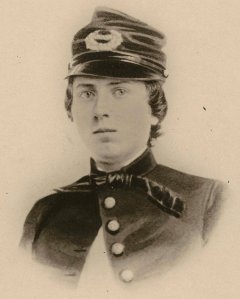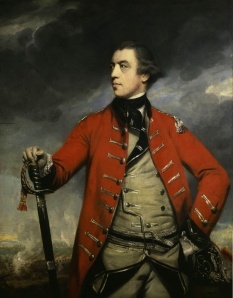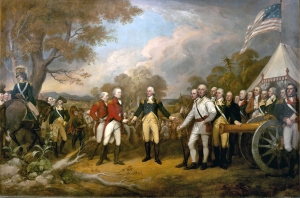Today, 6 November, the White House will hold a ceremony to honor First Lieutenant Alonzo H. Cushing with the Medal of Honor for his actions 151 years ago, during the Battle of Gettysburg.
Cushing was born in Wisconsin in 1841 and graduated from the United States Military Academy in 1861. He fought with the Army of the Potomac in a stunningly long list of engagements in northern Virgina from 1861-1863: the Manassas Campaign (including the First Battle of Bull Run), the Peninsular Campaign, the Siege of Yorktown, the Seven Days Battles, Rappahannock, and Thoroughfare Gap. Finally, he commanded Battery A, 4th U.S. Artillery at the Battle of Gettysburg.
On the third day of the battle, 3 July 1863, Battery A was deployed along Cemetery Ridge in the center of the Union lines. Gen. Robert E. Lee ordered an assault on the center of the line, to be led by Lt. Gen. James Longstreet, though it would come to be known as Pickett’s Charge for Confederate Maj. Gen. George Pickett. Cushing’s battery was deployed near The Angle, where the Confederate forces under Brig. Gen. Lewis Armistead made their farthest advance against Union positions, known as “the High Water Mark of the Confederacy.”
As Battery A directed fire against the enemy, Cushing was wounded twice by Confederate artillery fire. He continued to direct the battery against the enemy assault and refused to be evacuated to the rear. Cushing is reported to have said, “I’ll stay and fight it out, or die in the attempt.” First Sergeant Frederick Füger held Cushing upright so the officer could continue to give commands despite the wounds. As the enemy approached, Battery A continued to pour fire upon the enemy with its single remaining gun. Cushing was struck in the mouth with a bullet and died; he was 22 years old.
Füger assumed command and continued firing until no ammunition remained; the battery then defended with rifles and finally in hand-to-hand combat. The area around the Angle was briefly overrun by the Confederates before the enemy was beaten back and the Angle once again secured. Füger was awarded the Medal of Honor for his actions.
This story is also one about the perseverance of a local historian. Margaret Zerwekh of Wisconsin has written and lobbied to honor Cushing for nearly a quarter century. Elected officials from Wisconsin took up this issue and after review of the relevant facts, an Act of Congress was passed to award the medal to Cushing. This is a fascinating story from start to finish, and certainly makes me want to pick up the biography of Cushing, Cushing of Gettysburg, written in 1993 by Kent Masterson Brown.
Sources:




